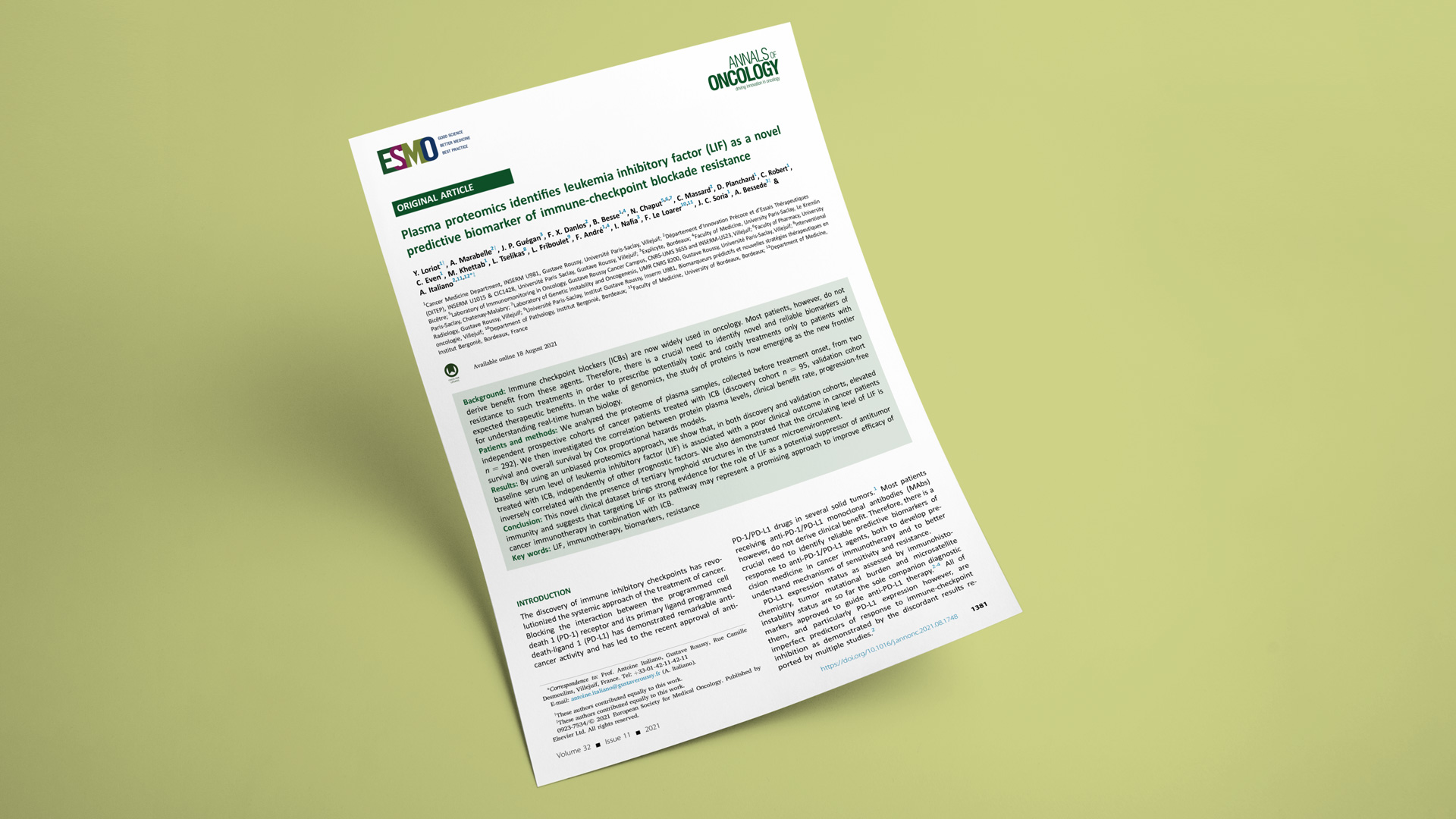Annals of Oncology, 2021, Aug. 18
Y Loriot, A Marabelle, J P Guégan, F X Danlos, B Besse, N Chaput, C Massard, D Planchard, C Robert, C Even, M Khettab, L Tselikas, L Friboulet, F André, I Nafia, F Le Loarer, J C Soria, A Bessede, A Italiano.
The authors highlight here the role of Leukemia Inhibitory Factor (LIF) as a potential suppressor of antitumor immunity. Nowadays, Immune Checkpoint Blockers (ICB) are widely used in oncology, although most patients do not derive benefit from these agents. In order to understand the mechanisms underlying these inefficiencies and only treat patients with expected therapeutic benefits, it is crucial to identify new reliable biomarkers of resistance. In this context, proteome analysis now appears as the new frontier for understanding real-time human biology. Thanks to a proteomics approach using Olink® technology, we show that high plasma levels of LIF before treatment onset are correlated with a poor clinical outcome in cancer patients treated with ICB. By analyzing the tumor microenvironment, we also point out that the circulating amount of LIF is inversely associated with the presence of Tertiary Lymphoid Structures (TLS), which have been shown to be associated with a better response to ICB (Vanhersecke et al, Nat Cancer, 2021). These results lead to consider the targeting of LIF or its pathway as a new approach to improve the efficacy of cancer immunotherapy in combination with ICB.
Learn more about Olink® technology.

